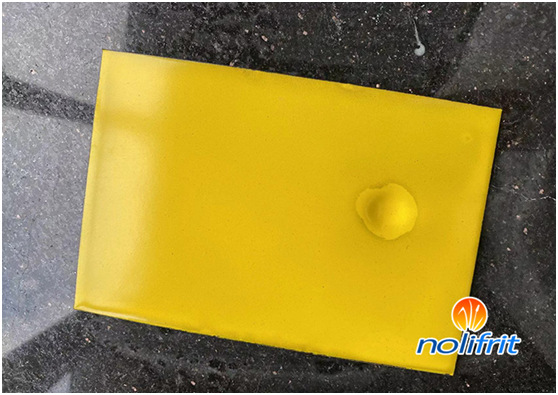Functions of Antimony and Antimonides
As Opacifying Agents For Enamel
After the light enters the porcelain layer, it is scattered, so that the light cannot reach the ground coat and become devitrified. This is the function of the enamel opacifier. Our common opacifiers include titanium dioxide, antimony, zirconia, etc. I have introduced "The role of titanium dioxide as an opacifier for enamel" before. This article briefly introduces the properties of antimony and antimonides as opacifiers for enamel and how they work in enamel frit.

1. Antimony metal
Metal antimony (Sb), commonly known as pure antimony, is a silver-gray hexagonal inclined crystal with metallic luster. It is brittle, odorless and poisonous. Flammable vapor, insoluble in water, hydrochloric acid and alkali, soluble in the mixture of concentrated sulfuric acid, nitric acid and tartaric acid, calcined at high temperature in an oxidizing atmosphere to generate Sb2O3 and Sb2O5.
The metal antimony introduced into the enamel must be in powder form. When used, a sufficient amount of oxidizing agent should be introduced at the same time to ensure partial oxidation.
During melting, if the oxidizing atmosphere is insufficient, or if it is not mixed evenly with the oxidizing agent, the particles are relatively coarse, which will cause metal antimony to gather and precipitate, resulting in black spots on the product.
2. Antimony trioxide
Antimony trioxide is referred to as antimony oxide, antimonous anhydride, commonly known as antimony white. It is a white slightly yellowish powder, odorless and toxic. The molecular formula is Sb₂Og, the molecular weight is 291.5, the density is 5.67 g/cm3, the melting point is 652°C, and the refractive index is 2.01. It is soluble in concentrated hydrochloric acid, concentrated sulfuric acid, oxalic acid, tartaric acid, concentrated alkali and fuming nitric acid, and insoluble in water and ethanol.
Sb₂Os is a strong opacifying agent. Since it starts sublimating at 1456°C, the melting temperature of antimony white enamel should not be too high to prevent sublimation from affecting opacification. When melting, if the furnace is in a reducing atmosphere, Sb, o, will be reduced to metal antimony, which will cause black spots on the enamel.
3. Sodium antimonate
Sodium antimonate, also known as sodium metaantimonate, is made by mixing metal antimony and sodium nitrate in a certain proportion and calcining at 900~950°C. The molecular formula is NaSbOs, the molecular weight is 192.7, and the density is 2.68 g/cm3. It is a white slightly yellowish powder, insoluble in water but soluble in strong acid. Sb₂O; accounted for 83.9%, NazO accounted for 16.1%, mostly introduced as grinding to ensure SbzO. The content is good for opacification, but not good for gloss. At the same time, it can also be ground into the ground coat to improve the adhesion performance.